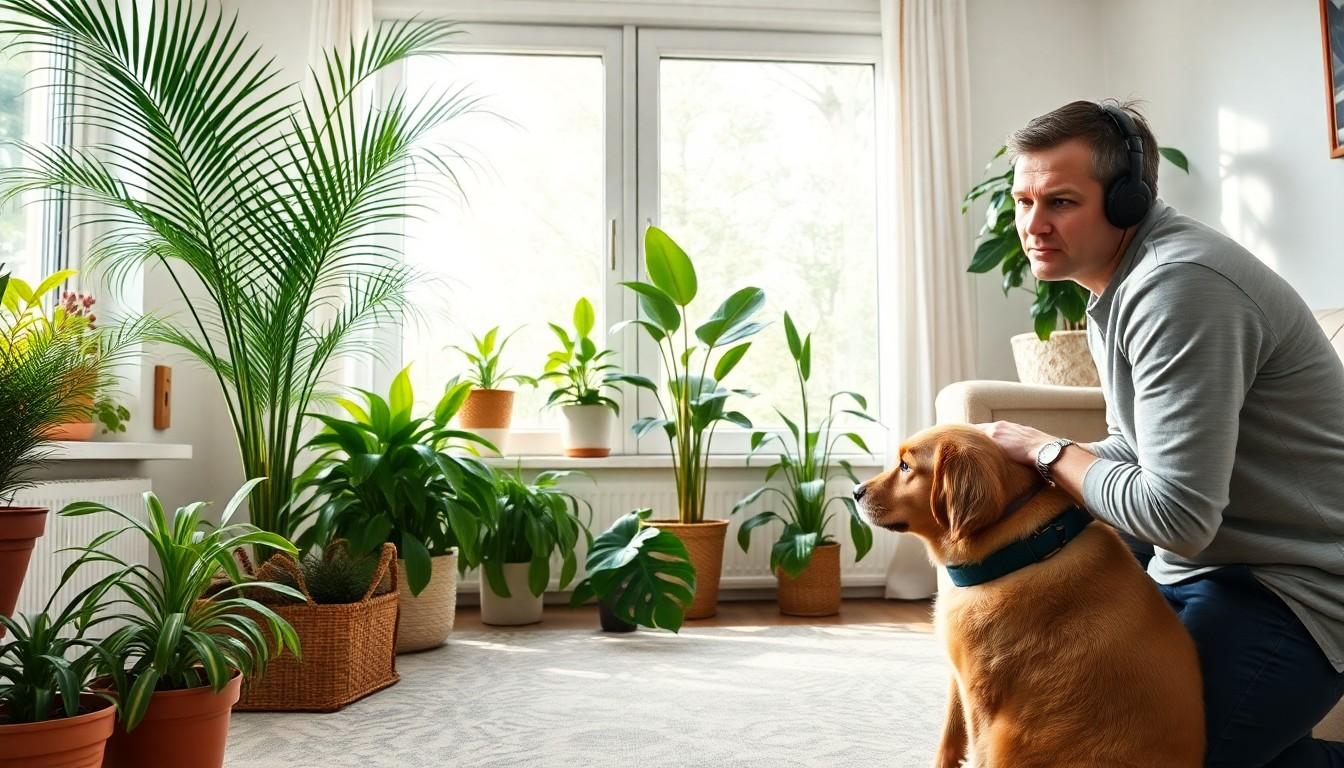When it comes to creating a cozy home, house plants often steal the show. They add a splash of color and a breath of fresh air. But for dog owners, there’s a hidden danger lurking among those leafy greens. Some popular plants can turn from delightful decor to toxic trouble for our furry friends.
Imagine your dog, thinking they’ve found the ultimate chew toy, while you’re blissfully unaware of the potential hazards. It’s a recipe for disaster that no pet parent wants to face. From the curious pup to the mischievous mutt, knowing which house plants to avoid is essential for keeping tails wagging and stomachs happy. Let’s dive into the leafy world of house plants and uncover which ones could spell trouble for your canine companion.
Understanding Toxicity In House Plants
House plants can enhance a living space but certain species contain toxins harmful to dogs. Identifying these plants is crucial for pet owners. Symptoms of toxicity often manifest through gastrointestinal issues, lethargy, or unusual behavior.
Some common toxic house plants include:
- Sago Palm: All parts are poisonous, particularly the seeds that cause severe liver damage.
- Philodendron: Contains calcium oxalate crystals, leading to oral irritation.
- Pothos: Can induce vomiting and oral discomfort due to its calcium oxalate content.
- Lilies: Highly toxic, even small amounts can lead to kidney failure in dogs.
Signs of poisoning vary, but prompt intervention often proves effective. Observing a dog’s behavior after exposure helps in early detection.
Maintaining awareness about these plants reduces risks. Dog owners should research plant safety before introducing new greenery into their homes. Utilizing reliable resources assists in making informed decisions.
In addition to toxic plants, understanding how dogs interact with their environment influences safety measures. Keeping plants out of reach or in non-accessible areas offers a practical approach. Regularly checking for signs of nibbling can help mitigate potential danger.
Common Symptoms Of Plant Poisoning In Dogs

Recognizing symptoms of plant poisoning in dogs is crucial for pet owners. Noticing changes in a dog’s behavior can lead to timely intervention.
Gastrointestinal Issues
Gastrointestinal distress is a common symptom of plant toxicity. Dogs may experience vomiting or diarrhea after ingesting toxic plants. These signs often appear within hours of exposure, indicating the need for immediate attention. Loss of appetite frequently accompanies these symptoms, as an affected dog may not want to eat. Abdominal pain may also occur, manifesting as whining or reluctance to be touched. Monitoring for these issues is essential.
Neurological Effects
Neurological symptoms can arise from exposure to toxic plants. Symptoms may include tremors or seizures, which indicate serious toxicity. Affected dogs might display disorientation or confusion, struggling to maintain balance. Changes in behavior, such as increased aggression or lethargy, can also signal a problem. Awareness of these signs aids in prompt veterinary care, which is crucial for recovery. Observing a dog closely encourages quick identification of any concerning symptoms.
List Of House Plants Toxic To Dogs
Certain house plants can pose serious threats to dogs. Being aware of these plants helps ensure pet safety at home.
Lilies
Lilies are highly toxic to dogs, particularly varieties like Easter and Tiger lilies. Symptoms include vomiting, diarrhea, and lethargy. Even small amounts can lead to acute kidney injury, making it vital to seek veterinary care immediately if exposure occurs.
Sago Palm
Sago Palm toxicity poses significant risks to dogs. Ingesting even small portions can cause severe liver damage and potentially death. Signs of poisoning include vomiting, diarrhea, and seizures. It’s crucial to remove this plant from homes with pets.
Dieffenbachia
Dieffenbachia, commonly known as Dumb Cane, contains calcium oxalate crystals. Chewing on the leaves results in intense oral irritation, swelling, and difficulty swallowing. If a dog shows signs of distress after contact, immediate veterinary attention is necessary.
Oleander
Oleander is highly poisonous, containing cardiac glycosides. Ingestion can lead to serious heart issues, including arrhythmias. Symptoms may appear within hours and can include vomiting, slowed heart rate, and lethargy. Quick intervention is essential for affected dogs.
Philodendron
Philodendron is another common house plant that presents dangers to dogs. Chewing on the leaves may lead to oral irritation and swelling. Symptoms include drooling, vomiting, and difficulty swallowing. A dog’s safety relies on keeping this plant out of reach.
Tips For Preventing Plant Poisoning
Dog owners can take proactive measures to ensure their plants don’t pose a risk. Selecting safe plant choices is one effective way to maintain a pet-friendly environment.
Safe Plant Choices
Certain plants are non-toxic and can still beautify homes. Options like spider plants, Boston ferns, and bamboo palms pose no threat to dogs. Always favor plants that are known for their safety. Dog owners should research any new plant before bringing it home. Choosing non-toxic variations can reduce the likelihood of ingestion and subsequent health issues.
Dog-Proofing Your Home
Creating a safe space for pets involves strategic placement of plants. Placing toxic plants in elevated areas prevents dogs from accessing them. Using barriers, such as baby gates, helps establish boundaries around plant zones. Additionally, providing alternative chew toys can divert attention away from plants. Regular inspections of both plants and pets for signs of nibbling promote early detection of potential issues. Adopting these practices lowers the risk of plant-related poisonings in dogs.
Conclusion
Keeping a pet-friendly home requires vigilance when it comes to house plants. By understanding which plants are toxic to dogs and recognizing the symptoms of poisoning, pet owners can create a safer environment for their furry companions.
Choosing non-toxic alternatives and implementing safety measures can help minimize risks. Regularly inspecting both plants and pets for any signs of distress is essential for timely intervention. With the right precautions in place, dog owners can enjoy the beauty of house plants without compromising their pets’ health.




